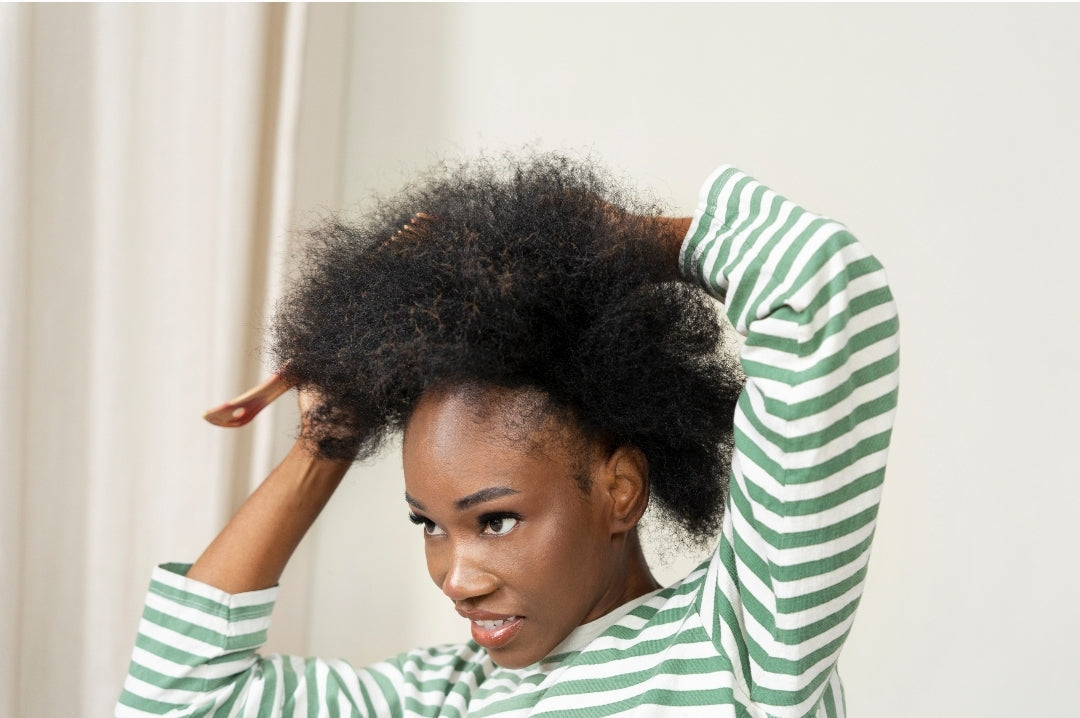Why Afro Hair is Prone to Breakage and How to Care for It
I must start this blog post by thanking the founder of Natural Nigerian, Ifeamaka for the wonderful conversation we had that inspired this blog post. We were both discussing causes of hair loss at the nape area. This topic doesn’t get covered enough! So here you go!
The nape of the neck is one of the most delicate and often overlooked areas of the hair, especially for those with afro-textured hair. This section of hair is particularly prone to breakage, thinning, and damage. Understanding why the hair at the nape is so fragile and how to care for it can help maintain healthy, strong hair overall. So let’s look at what the science is saying and explore practical solutions.
Why the Nape is So Vulnerable
1. Finer and Weaker Hair Strands
The hair at the nape tends to be finer and more delicate compared to the rest of the hair. This is due to the smaller diameter of the hair strands in this area, which makes them more susceptible to breakage. Research has shown that hair diameter is directly related to its strength—thicker strands are generally stronger, while finer strands are more fragile.
2. Increased Friction and Tension
The nape area is constantly exposed to friction from clothing, scarves, and even pillowcases. This repeated rubbing can weaken the hair cuticle over time, leading to breakage. Additionally, hairstyles like ponytails, braids, or weaves often place extra tension on the nape, further exacerbating the problem.
3. Reduced Sebum Production
The nape area typically produces less natural oil (sebum) compared to other parts of the scalp. This lack of natural lubrication leaves the hair drier and more prone to breakage. The tight coils of afro hair already struggle to distribute sebum evenly, and this issue is amplified at the nape.
4. Environmental Exposure
The nape is often exposed to environmental stressors like sweat, humidity, and pollutants. Sweat, in particular, can dry out the hair and scalp, while pollutants can weaken the hair shaft. Over time, these factors contribute to breakage and thinning. Also, some research suggests that sunlight struggles to get to the back of the hair which could exacerbate loss in that area.
5. Improper Hair Care Practices
Many people unintentionally neglect the nape when washing, conditioning, or styling their hair. This area is often harder to reach and may not receive the same level of care as the rest of the hair, leading to dryness and damage.
How to Care for the Nape and Prevent Breakage
1. Be Gentle During Styling
Avoid hairstyles that pull too tightly on the nape, such as high ponytails or braids. Opt for looser styles that reduce tension on this delicate area. If you wear protective styles, ensure they are not too tight and give your hair regular breaks between installations.
2. Moisturise Regularly
The nape area needs extra hydration due to its lack of natural oils. Apply water-based moisturisers and seal with an oil like our Khalila oil. Pay special attention to this area during your moisturising routine.
3. Protect from Friction
Wear satin or silk scarves or use a satin pillowcase to reduce friction while sleeping. Avoid rough fabrics like cotton, which can cause breakage over time.
4. Cleanse and Exfoliate the Scalp
Sweat and product buildup can clog the hair follicles at the nape, leading to thinning. Use a gentle clarifying shampoo like our Dudu to cleanse the area and exfoliate the scalp with Funfun once a week at least.
5. Avoid Over-Manipulation
The nape is often over-manipulated during styling, detangling, or brushing. Be mindful of how much you touch this area, and always handle it with care. Use a wide-tooth comb or your fingers to detangle gently.
6. Incorporate Strengthening Treatments
Protein treatments can help strengthen the hair at the nape by repairing the cuticle and reducing breakage. Look for products with hydrolysed and quaternised proteins - these are present in our Deep Conditioner Chief.
7. Monitor for Signs of Damage
Regularly check the nape area for signs of thinning, breakage, or irritation. If you notice any issues, adjust your hair care routine or consult a trichologist for professional advice.
Conclusion
The hair at the nape is one of the most fragile areas for those with afro-textured hair, but with proper care and attention, it can thrive. By understanding the unique challenges this area faces—such as friction, dryness, and tension—you can take steps to protect and nourish it.




